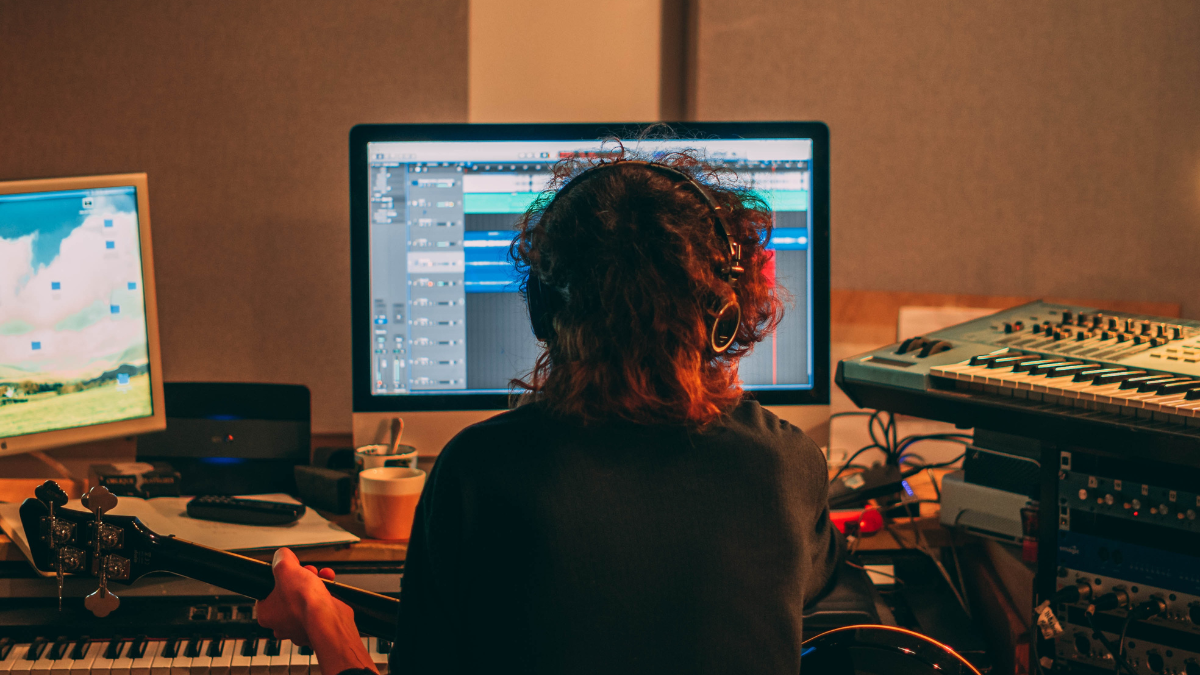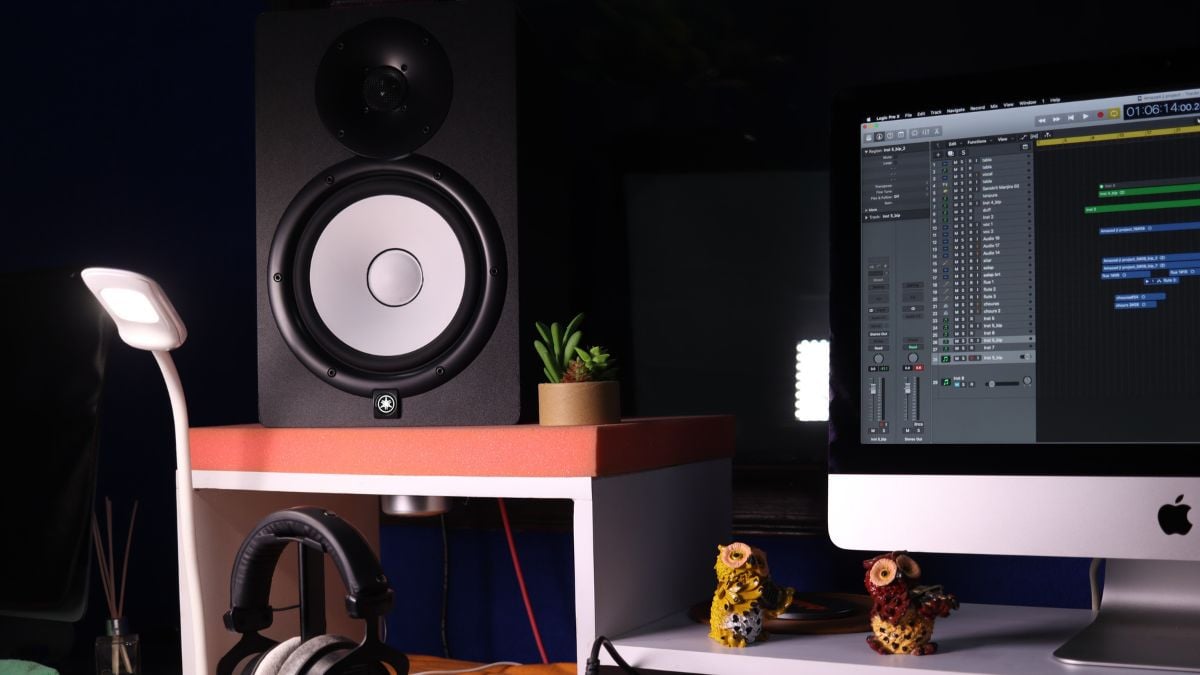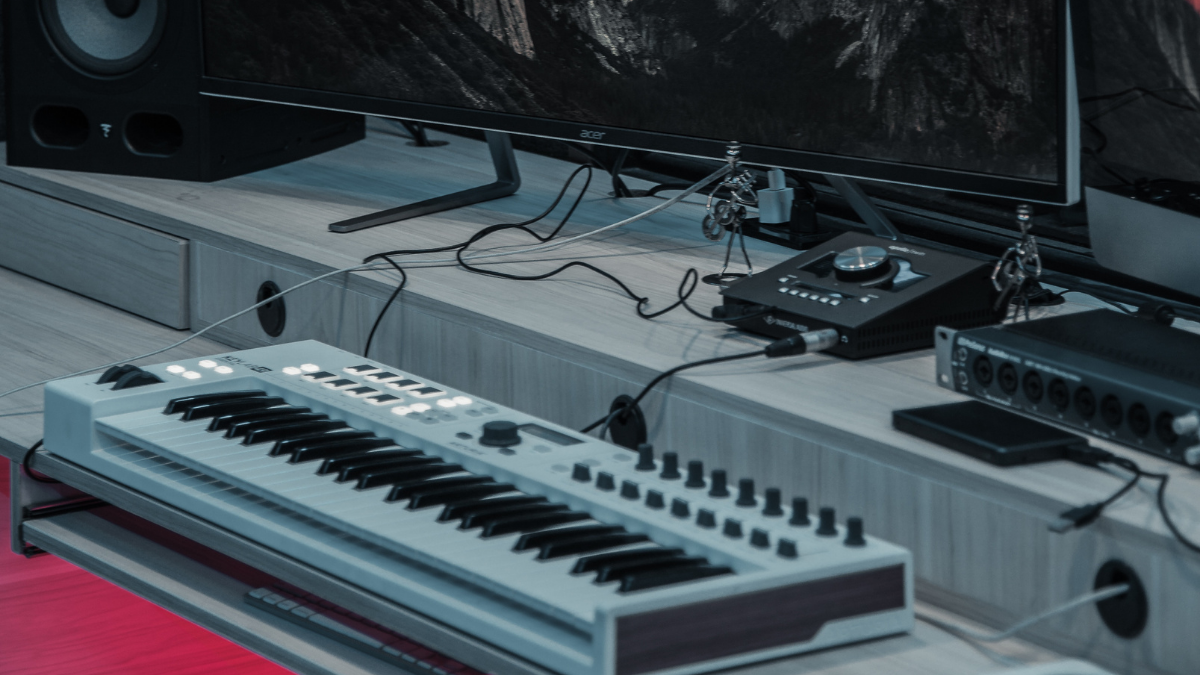How to Use Dynamic EQ: Level up Your Mix Like a Pro

The great thing about dynamic EQ is that it works selectively, so where a traditional static EQ will boost or attenuate a sound source regardless of what that source is doing, a dynamic EQ will only kick in when it is needed.
In this article will go deep into what a dynamic EQ is and how it works before explaining how to use it effectively in your mixes. We’ll even recommend a few great dynamic EQ plugins for you – including one that you can get for free.
What Is Dynamic EQ?
Dynamic EQ reacts to an incoming audio signal and behaves accordingly. It’s a combination of a traditional EQ with the kind of dynamic controls that you find in compressors and expanders.
All of this means that instead of cutting or boosting a signal with a steady amount of gain, the level of gain changes dependent on the input. That means, when set correctly, your EQ will only cut or boost when it detects that this behavior is necessary.
How Does Dynamic EQ Work?
As in a traditional EQ plugin, each EQ band has its own set of controls for frequency, Q (bandwidth) and gain. The first two controls work just as they would in any other EQ – it is the gain that works dynamically. You will need to set a threshold on the gain control – this will work in much the same way as the threshold on a compressor or expander.
Once the input signal passes the threshold the gain control kicks in and either attenuates or boosts the signal, depending on your settings. If you want the gain to act in the same way as an expander, then you need to set the gain control with a positive value, if you want it to act as a compressor, set it with a negative value.
Dynamic EQ Vs Multiband Compressor
If you are familiar with the concept of multiband compression, you may have noticed some similarities between that process and the one we have just described. Both processes link dynamics to the frequency spectrum, and both compress or expand selectively. However, there are some key differences between the two that will dictate whether you use one or the other for any given scenario.
EQ bands on multiband compressors tend to have a fairly standard shape, with steep crossover points that mark out the edges of the frequency band that is being processed. In contrast, dynamic EQs often give you a great deal of control over the shape of the filter that you are using – you could potentially use much gentler bell or shelf shapes that roll off gradually instead of sharply.
Dynamic EQs generally also give you finer control, so if you want to only effect a very specific, narrow band of frequencies then this should be the tool you use. Multiband compressors will tend to effect much wider frequency areas.
Therefore multiband compressors are useful when you need to control broad areas of the frequency spectrum on specific instruments or on your tracks as a whole. For instance if you want to tighten up the bass on your master bus. Dynamic EQs are better for surgical, corrective tasks – more on this below.
How To Use Dynamic EQ In Your Mix
You won’t need to use dynamic EQ in every mix, but it is an extremely useful tool when you need to attenuate distracting or unpleasant resonances in a performance. These resonances can be present in all kinds of highly dynamic sources – so you may find them in recordings of acoustic instruments, and they are fairly common in vocal performances.
Sometimes the problem is caused by a combination of the voice or instrument and the specific room they are recorded in; the combination of notes played and the characteristics of the space can lead to resonances only on specific notes.
Dynamic EQ is a surgically precise, and relatively transparent tool that can fix this problem more cleanly than EQ or compression alone. If you were to compress the problematic areas, it would make the resonance quieter but it would still be there in the mix.
You could definitely fix the problem with a static EQ – however the drawback here is that you would be applying an EQ cut to the entire channel, not just the problem sections. Therefore you may risk your audio sounding thinner or more lifeless in the areas where the resonance wasn’t occurring.
The beauty of dynamic EQ is that it only works on the sections when it is needed, fixing those problematic frequencies, but then deactivating in the sections where it is unnecessary, leaving the rest of the audio unaffected.
The 3 Best Dynamic EQ plugins
It is quite unusual to find a dynamic EQ bundled with your DAW, so in many cases you are going to have to rely on a plugin from a third party developer. Below we pick three of our favourites – all are reasonably priced, and one is completely free!
Waves F6
This plugin is listed at $99 but is often available for a lot less than that so take a look at what deals Waves have on. The F6, as the name suggests, contains 6 floating dynamic EQ bands, and it supports sidechaining, parallel compression and mid-side processing. It has high and low pass filters and you can select from either notch or bell shaped EQ shapes. All in all, this is a supremely versatile dynamic EQ.
Wavesfactory Trackspacer
Trackspacer is a very interesting take on the dynamic EQ. This plugin is completely focussed on one specific dynamic EQ function – the fixing of masking problems in a mix. The nice thing about Trackspacer is that it cleverly automates this function, saving time and providing accurate results. It works by analysing a sidechain signal, and then creating room in the mix for this signal by applying an inverse EQ. So if you want to create room for a vocal by subtractively EQing an acoustic guitar track, you would apply this plugin to the guitar, sidechain the vocal to it and – hey presto – a dynamic EQ is applied to your guitar that carves out space for the vocal. It is available for €59 from the Wavesfactory website.
TDR Nova
The TDR Nova is an excellent plugin that we’ve recommended multiple times in the past. It’s much more than just a dynamic EQ; it also gives you a static parametric EQ, multiband compression and wideband compression. As a dynamic EQ it offers you four bands and either shelf or notch shaped filters.
Dynamic EQ is not as widely known as many other audio effects, but it is incredibly useful in certain situations – fixing problems that are extremely tough to rectify by other means. This tool is one that you will no doubt come to value extremely highly.



Comments:
Mar 11, 2023
Login to comment on this post